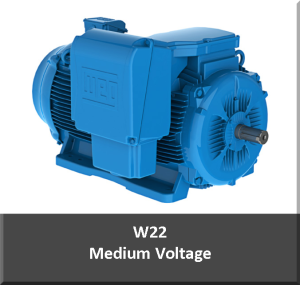Advantages of Medium Voltage Motors
Medium Voltage Motors
MV motors work across a broad range of industries. They drive large compressors, conveyors, crushers, fans, pumps, and other machinery, often at variable speeds. “MVs are the choice above 500 hp,” says John Mallon, vp of engineering at Emerson Motors (St. Louis). “That’s where the benefits of MV really blossom.”
A key difference between LV and MV is that a MV motor operates at higher voltages—up to 35 kV, according to IEC standards. That allows the use of smaller distribution cables—which also reduces cost. Another advantage is the lower current in MV motors. That allows the use of smaller gauge leads—again, significantly decreasing cost per foot for long cable runs to remote pumping stations.

The lower current in medium voltage motors also makes them more energy efficient. That’s because the rotor bearings require less current, which results in lower heat generation and longer life. The rotor cages are made of silicon steel and are available in both roller or bushing types, depending on customer requirements.
Advantages of Medium Voltage Motors
At the same time, a MV motor’s reduced current draw can result in more copper being available for the DC bus. That can improve efficiency by reducing losses and increasing copper utilization, says ABB Inc. (New Berlin, WI).
During operation, the DC bus—composed of power electronics components that convert AC into DC—stores energy in capacitors until needed. It then rectifies the DC to produce alternating pulse width modulated signals to manipulate the motor’s speed. This information is transmitted to the motor controller and stored in a memory bank—another component of the control system.
The lower current in a MV motor also allows the use of smaller fuses, which can further reduce costs and downtime by limiting damage from short circuits and overloading. In addition, the fuses can be located closer to the motor to minimize the distance of fault current paths. Another benefit of a lower current is that the smaller wires are easier to work with—and connect—within the terminal box. That can reduce maintenance crews’ time in making the connections and also help mitigate risk of damage to the wires.